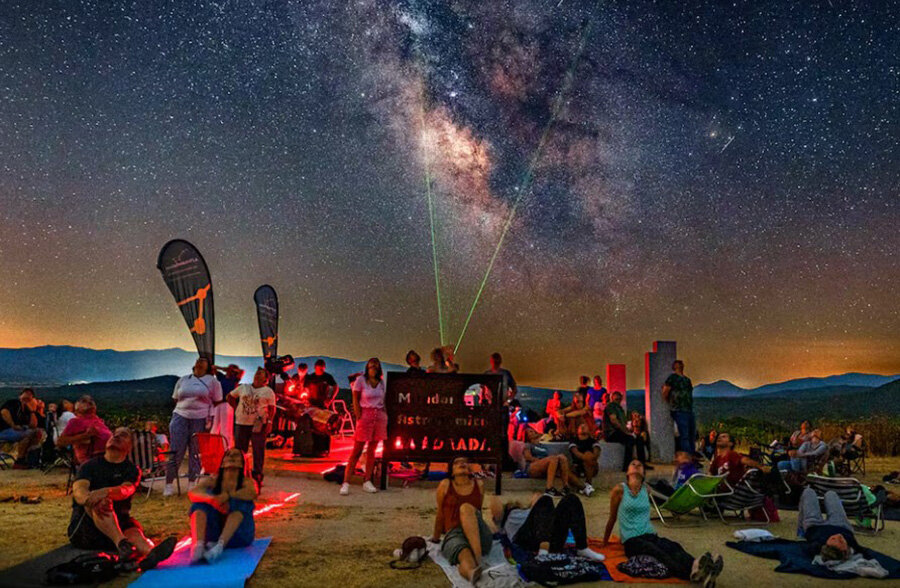читайте также
 Spain’s Real Estate: Record Prices and Falling Yields
Spain’s Real Estate: Record Prices and Falling Yields
 Fuel crisis at Seattle Airport: the Olympic Pipeline outage has disrupted supplies
Fuel crisis at Seattle Airport: the Olympic Pipeline outage has disrupted supplies
 European Hotel Construction Market Breaks Records: Upper Upscale Segment Reaches New Heights
European Hotel Construction Market Breaks Records: Upper Upscale Segment Reaches New Heights
 Middle East Hotel Construction Pipeline Hits Record High: 659 Projects and 163,816 Rooms Under Development
Middle East Hotel Construction Pipeline Hits Record High: 659 Projects and 163,816 Rooms Under Development
 New Rules for Greece’s Golden Visa: What Changes for Investors
New Rules for Greece’s Golden Visa: What Changes for Investors
 Holiday Travel 2025: Less Spending, More Generational Shifts — Deloitte’s New Forecast
Holiday Travel 2025: Less Spending, More Generational Shifts — Deloitte’s New Forecast
Tourism & hospitality / News / Reviews / Spain / Tourism Spain / USA / Iceland / Portugal 29.07.2025
Astrotourism Takes Off: New Travel and Leisure Trends

Photo: El País
In the Andalusian province of Jaén, stargazing tourism is rapidly gaining momentum, turning the region into a magnet for those who prefer telescopes to beaches. Local company AstroÁndalus has already earned €750,000 from excursions, festivals, and educational tours, according to El País.
The project began in 2016, when a group of enthusiasts ventured to the Arctic in search of the Northern Lights. Upon returning, they launched a stargazing initiative in Jaén. Initially, the company focused on helping local governments reduce light pollution to preserve dark skies. Later, the project expanded into the tourism sector. Now the team includes 15 full-time employees, rising to over 20 in the summer. In 2024, the company’s revenue reached €750,000.
AstroÁndalus builds observation platforms, trains local businesses in astrotourism practices, and advises authorities—including those outside Spain in Peru, Chile, Colombia, and Mexico. In Andalusia, the company is developing a network of Starlight Reserves and a 6,000+ sq km astro-corridor in rural areas with minimal light pollution.
Visitors can enjoy telescopes, guided tours, astrophotography workshops, solar observations, lectures, kids’ programs with water rockets, exhibitions, and culinary experiences. Guests study the night sky, learn to navigate by the stars, and sample local cuisine.
The company manages Europe’s largest astronomy center, Galáctica, in Arcos de las Salinas and also organizes traveling Star Parties. Upcoming goals include events for the 2026 solar eclipse—most visible in Aragon—and attracting investors for international expansion. Management expects revenues to surpass €1 million this year.
Astrotourism is also thriving in other parts of Europe. In Iceland, night tours include stargazing and aurora viewing. In Portugal’s Alentejo, experiences feature lectures, astrophotography, and tastings amid the rural landscape.
In North America, it’s part of national tourism infrastructure. In the U.S., such routes are integrated into Dark Sky-certified parks. In 2022 alone, these areas attracted over 300 million visitors, generating nearly $24 billion in nighttime tours and lectures. Flagstaff, Arizona, was the first Dark Sky City, and Bryce Canyon National Park in Utah offers views of up to 7,500 stars on moonless nights.
Chile has been investing in astrotourism in its Atacama Desert and Elqui Valley, areas renowned as some of the best in the world for stargazing. With high-altitude, dry climates, minimal light pollution, and up to 300 clear nights per year, these sites attract both scientists and tourists. Major ESO observatories, Paranal and La Silla, are open to visitors, and ESO reports tourist visits have doubled in four years.
In Africa, Namibia’s NamibRand Nature Reserve is one of the continent’s few International Dark Sky Reserves. With virtually no light pollution, visitors can see the Milky Way and thousands of stars with the naked eye. Tours include astronomy-guided safaris, open-air overnight stays, and photo-focused excursions. Local communities are actively involved and benefit economically from this growing sector.
In Ladakh, India, the first national dark sky reserve is forming around the Hanle Observatory, located at over 4,500 meters. The site enjoys around 255 clear nights annually. Light pollution controls and educational outreach are in place, with private initiatives like Astrostays and Starvoirs helping engage local populations and foster social-impact tourism.
New Zealand’s Aoraki Mackenzie is among the world’s top dark-sky regions. Certified as a Starlight Reserve, it offers outdoor lectures and stargazing glamping experiences. Local operators note that astrotourism is one of the few year-round attractions drawing consistent visitor flows.
Astrotourism is quickly evolving from a niche activity into a sustainable travel segment with genuine economic and educational potential. According to the Starlight Foundation, interest in stargazing trips has grown 320% since 2022, with 58% of global travelers open to including such experiences. In 2025, Starlight and UN Tourism presented the first global guide to developing astrotourism.
The document outlines steps for governments, businesses, and communities: designate low-light zones, support educational tourism, involve locals in tour operations, and develop astronomy programs in schools. Astrotourism also helps diversify travel flows, reduce pressure on overcrowded destinations, and extend tourism seasons through year-round skywatching.





